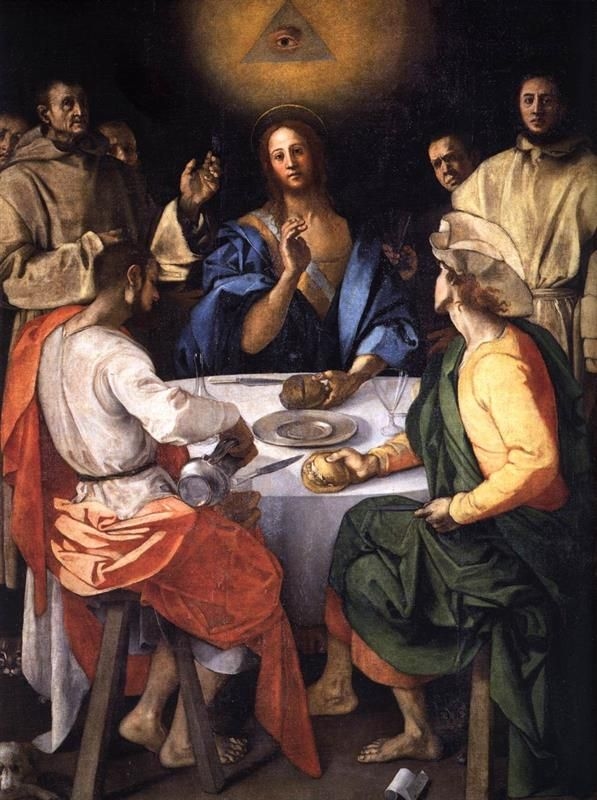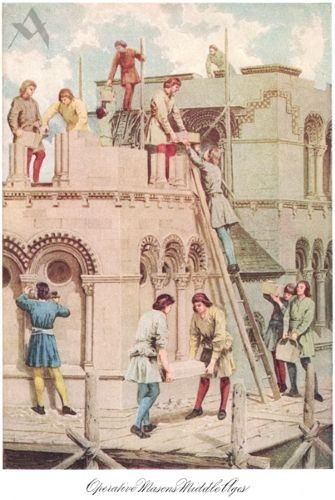The All-Seeing Eye: Unraveling the Truth Behind Freemasonry's Most Famous Symbol


Ancient Origins, Not a Masonic Invention
The first crucial fact to understand is that the All-Seeing Eye, or Eye of Providence, was not invented by Freemasons. Its use as a symbol for a watchful, divine power is ancient. It can be traced back to the Eye of Horus in ancient Egypt, a symbol of protection, royal power, and good health. Later, during the late Renaissance in Europe, the symbol was adopted into Christian iconography. Often depicted within a triangle to represent the Holy Trinity, the Eye of Providence became an explicit symbol of God's benevolent and omniscient watchfulness over creation.
This symbol appeared frequently in church architecture, religious paintings like Pontormo's 1525 Supper at Emmaus, and in the popular "emblem books" of the 16th and 17th centuries. It was a widely understood and conventional representation of Divine Providence long before it became a standard part of Masonic imagery.

The Masonic Interpretation: The Great Architect is Watching
When Freemasonry adopted the All-Seeing Eye into its symbolic lexicon, it did so in keeping with this established meaning. For a Mason, the symbol represents the omnipresent eye of God, the Great Architect of the Universe. It is not a symbol of surveillance by the fraternity, but a personal reminder to the individual Mason that his thoughts and actions are always observed by his Creator. It is a powerful call to integrity, prompting him to live a life of virtue, not out of fear of being caught by his brethren, but out of a sense of accountability to a higher power.
This interpretation is deeply rooted in the biblical texts that form a part of the "Great Light" in Masonry. Passages from the Psalms, for example, speak directly to this theme: "Behold, the eye of the LORD is upon them that fear him," and "The eyes of the LORD are upon the righteous". The common depiction of the eye within a brilliant glory of light is drawn from a passage in the Book of Ben Sira, which describes the eyes of the Lord as being "ten thousand times brighter than the sun, beholding all the ways of men".

The Great Seal and the Dollar Bill: A Historical Clarification
The connection between the symbol on the dollar bill and Freemasonry is a common source of confusion and is often cited as "proof" of a Masonic conspiracy in the founding of the United States. However, a simple look at the historical timeline debunks this claim.
The Eye of Providence was incorporated into the design of the Great Seal of the United States in 1782. The first documented appearance of the All-Seeing Eye as a standard part of Masonic symbolism was in 1797, in The Freemason's Monitor by Thomas Smith Webb. This means the symbol was adopted for the Great Seal a full fifteen years before it became a common Masonic emblem.
The reality is that the Founding Fathers, in designing the Great Seal, chose a popular and conventional 18th-century symbol to represent their belief that their new nation was under the protection of Divine Providence. Freemasonry, which shared this profound belief in a guiding deity, later adopted the very same symbol for its own allegorical purposes. The connection is not one of causation, but of correlation; both institutions drew from a common well of religious and philosophical symbolism prevalent in their time.
The All-Seeing Eye is ultimately a symbol not of secret power, but of universal truth. It is a reminder that our deeds are not done in a vacuum and that the path to a virtuous life is walked under the watchful and benevolent gaze of the Great Architect of the Universe.

Explore the dramatic legend of the architect of Solomon's Temple. Learn why his story of fidelity and sacrifice is central to the Master Mason degree.

or a man about to become a Freemason, the journey begins not in a grand, well-lit lodge room, but in a small, dark, and solitary space.

Understand the symbolic journey every Freemason takes through the three degrees of the Blue Lodge: Entered Apprentice, Fellow Craft, and Master Mason.

Go beyond the surface and learn the deep moral and philosophical lessons taught by the Square, Compasses, and the letter 'G'.
Comments
No comments yet. Be the first to comment!